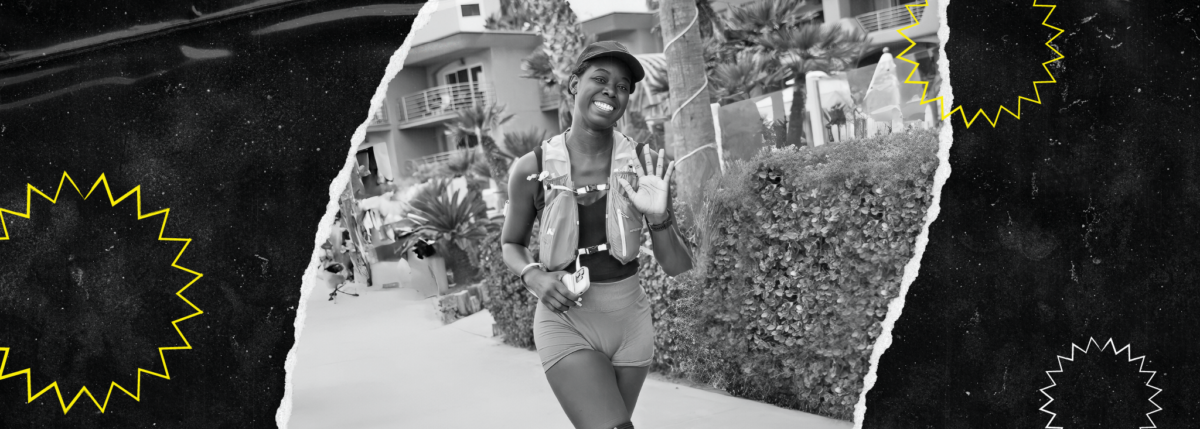How Starting a GLP-1 Helped This Chef Address Diet Culture
Written by: T'ara Smith, MS, Nutrition Education
5 minute read
December 17, 2021
Chef and nurse, Travis Cleaves, shares how starting a GLP-1 to manage Type 2 diabetes helped him view diet culture in a new light.
When people talk about diabetes, there’s always such an emphasis on food and what people with type 2 can and can’t have. While it’s true that people with type 2 diabetes must be more conscious about what they eat, it doesn’t mean there’s a one-size-fits-all approach to creating the “right diet.”
Speaking of diet, or in this case, dieting, the pressure to find a quick fix to addressing a person’s health issues is real. Diet culture brings upon issues that can impact a person’s relationship with food, their body and for some with diabetes, the chronic illness itself.
For nurse and chef Travis Cleaves, also known as the Spice Twerker and owner of Blue Lotus Spice Company, it took moving from metformin to a GLP-1 to see how prevalent diet culture affects diabetes self-management and care. Travis spoke with Beyond Type 2 about his type 2 diagnosis and how using a GLP-1 to manage diabetes helped him address diet culture.
BT2: Hi Travis—please tell us about your type 2 diabetes diagnosis.
I was diagnosed back in July of this year while being treated for cancer with steroids. I had the very classic, typical symptoms. Excessive thirst and going to the bathroom at least 10 to 15 times a day. I was drinking literally gallons of water, and it felt like every time I put liquid in my body, it was coming right back out.
I’m a nurse and my first thought was “no, this can’t be.” I went to Walgreens, bought a glucometer and took my blood sugar, and you know how with glucometers, they have a specific range they can read blood glucose numbers. If it says low, you’re probably somewhere under 60 mg/dL. If it says high, you’re well over 400 mg/dL. The first time I took it, it said high.
To be honest, the first day was hard. When my doctor told me my A1C was 14, I was crushed. Diabetes runs in my family and I felt like I had worked so hard to keep myself away from having the full-blown diabetic diagnosis.
The second day, I went from extreme remorse to extreme confidence, determined to get this on track. I woke up the following morning and walked two miles. I hadn’t done a straight two-mile walk in God knows how long. But in my head I was like, I knew this was the right thing to do.
What changes did you have to make? What medications did you have to start?
I already had been on metformin prior to my diagnosis because I had prediabetes. I was on about 500 mg per day, which wasn’t a lot. After my diagnosis, my endocrinologist increased my dosage to 1000 mg and gave me long-acting insulin to take at night. The insulin was useful because I was waking up anywhere between 260-280 mg/dL in the mornings. That routine lasted about two and a half weeks and my numbers improved. She later gave me the Freestyle Libre and connected the device to where she could monitor my numbers when I scanned my continuous glucose monitor (CGM).
When did you start taking a GLP-1 to manage type 2 diabetes? What was it like for you to make that transition?
In August, she recommended that I go on the GLP-1. She started me off on the 0.75 mg dose of it. The first week I took it, it was rough. I felt like no matter what I ate or drank, it felt like it was coming right back up. As a chef, that made it hard to enjoy my own food. It was frustrating at first.
My doctor gave me something to help with nausea, which I took for about a week. It helped tremendously. In September, we went to look at my numbers again and she decided to up my dosage from .75 mg to 1.5 mg, which is where I’m at currently. However, I don’t feel as nauseous, probably because my body has gotten used to it the medication.
What impact did the GLP-1 have on your blood glucose levels?
I became a food label reading savant. I would cook things that were not only tasting good but just low carbs. I eat a lot less now, than I did previously, because of the GLP-1. But also, I’ve noticed that my numbers are very much a lot steadier. I don’t get the huge spikes after I eat. Before, I would get these 50-to-60-point spikes.
I’d take my pre-meal blood sugar and it would be around 115-130 mg/dL. I would eat, and it would go 180-190 mg/dL, and sometimes into the 200s. I became frustrated with that because my goal is, I’m trying to keep it at least 160 and under. Once I got on the higher dose of the GLP-1, I really don’t have those huge spikes. I’ve also found that my early morning numbers are a lot better now than they were before.
Also, I’ve gotten more energy since I’ve been taking it. In the morning I used to have this dreadful feeling of lethargy until I had some coffee or whatever. Now I get up in the morning and feel good and ready to go.
Earlier I mentioned after I first got diagnosed back in July, I started walking two miles a day because I noticed that when I walked, that my blood sugars would go down immediately after exercising, and they stayed manageable for a good chunk of the day. Once I started taking the GLP-1, not only do I do the two miles, but I do the two miles twice a day. I’m up to four miles a day. I’ve lost over 8 pounds, as well.
How did the GLP-1 impact your relationship with food and diabetes?
From an emotional perspective, it was challenging to adjust for me. Mainly because I cook a lot and am used to making rich foods. I’m from the south—New Orleans—so rice is in everything we eat. We’ve got dishes like red beans and rice, jambalaya, dirty rice and gumbo. Turns out, rice is not my friend because I always see the biggest spikes after I eat it, even when I eat small amounts of it.
I’m more conscious now about everything. I’ve found that I pay a lot more attention to the things I consume. I pay way more attention to portion sizes now. I realized that in this country, our portion sizes are ridiculously huge. With the GLP-1, now that I don’t eat as much, I’m like, “Why the heck would you give a human being this much food, in one sitting? Who needs this much?” This is interesting considering how many people blame people with type 2 diabetes for eating the “wrong” foods, which we know isn’t true because diabetes can be the result of many factors—not just what someone eats.
I struggled with the guilt around eating certain foods after I was diagnosed. That first day, I had a craving for wings but told myself because I was diabetic, I wasn’t allowed to have those fried foods anymore. But I’ve learned that with diabetes, my body just requires a little more maintenance. That’s it. If I want to go to McDonald’s or Dairy Queen, I know that going occasionally won’t hurt me.
I hate that society assumes because someone has diabetes, they’ve been leading a sedentary life and just made poor decisions. Like I said earlier, I found out I had diabetes while being treated for another illness. Also, my parents are diabetic. I was bound to get it sometime. I also think there’s this expectation that a person of a certain size can or can’t get it. Health is relative but diet culture and the desire to see everyone fit within a certain body type doesn’t make that clear.
Did the GLP-1 play a role in how you view diet culture?
Yes, and I have a love-hate relationship with it—about 60-40 on the hate side. It’s out of control and I wish more people were paying more attention to how detrimental it’s become and the impact it has on mental health issues and how we view our bodies.
With the GLP-1, I started paying close attention to portion sizes because our stomachs aren’t that big. I think diet culture has seized on that. We eat on these large plates when we should probably eat half and take the rest home. But diet culture makes us feel bad about ourselves for indulging when another part of our food culture encourages us to indulge. Then when we start to feel inadequate about ourselves, we fall prey to fad diets that only make our relationships with food and ourselves more complicated. For a person with diabetes who is trying to maintain their blood glucose levels and build a lifestyle that suits them, those fad diets make it harder to do that.
For me, I work to overcome it by focusing on eating smaller portions throughout the day. If I go out to eat, I may skip the appetizer and order a smaller entrée. I don’t feel the need to “clean” my plate—I eat until I’m not hungry, not until I’m super full.
I can still enjoy food in smaller sizes. Me not eating a lot doesn’t mean I didn’t get to enjoy the meal. I know a lot of people who feel like, if they only get a small size, that means they won’t have fulfillment in what they ate.
I’ve learned to improve my relationship with food. Yes, food can taste good, food can taste great. But you also have to understand, it’s a means to an end. You don’t have to live for it.
Educational content related to type 2 diabetes is made possible with support from Lilly Diabetes. Beyond Type 2 maintains full editorial control of all content published on our platforms.

Author
T'ara Smith, MS, Nutrition Education
T’ara was diagnosed with type 2 diabetes in July 2017 at the age of 25. Since her diagnosis, she focused her academic studies and career on diabetes awareness and living a full life with it. She’s excited to have joined the Beyond Type 1 team to continue her work. Two years later, T'ara discovered she'd been misdiagnosed with type 2 and actually has latent autoimmune diabetes in adults (LADA). Outside the office, T’ara enjoys going to the movies, visiting parks with her dog, listening to BTS and cooking awesome healthy meals. T’ara holds an MS in Nutrition Education from American University.
Related Resources

Jordan Sooter’s journey to running marathons began in college as a way to stay fit....
Read more

Antoine Gibson is no stranger to overcoming challenges. As a saxophonist and marathon runner living...
Read more

Danica Collins not only prepared for one of the most challenging physical events of her...
Read more

